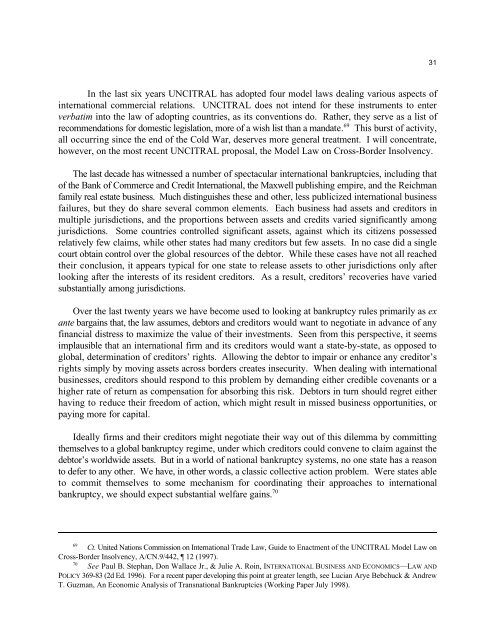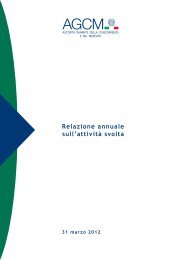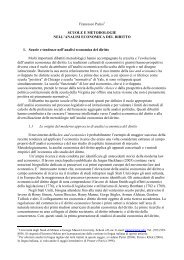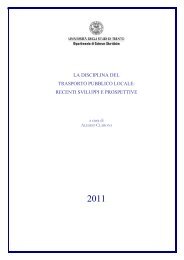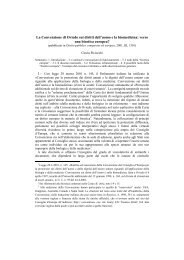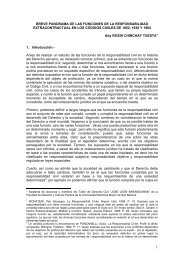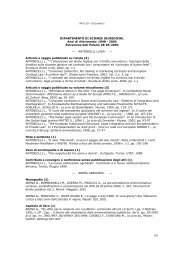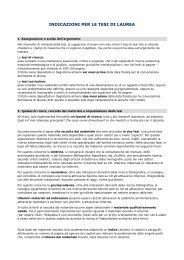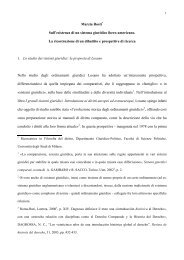The Futility of Unification and Harmonization in International ...
The Futility of Unification and Harmonization in International ...
The Futility of Unification and Harmonization in International ...
You also want an ePaper? Increase the reach of your titles
YUMPU automatically turns print PDFs into web optimized ePapers that Google loves.
31In the last six years UNCITRAL has adopted four model laws deal<strong>in</strong>g various aspects <strong>of</strong><strong>in</strong>ternational commercial relations. UNCITRAL does not <strong>in</strong>tend for these <strong>in</strong>struments to enterverbatim <strong>in</strong>to the law <strong>of</strong> adopt<strong>in</strong>g countries, as its conventions do. Rather, they serve as a list <strong>of</strong>69recommendations for domestic legislation, more <strong>of</strong> a wish list than a m<strong>and</strong>ate. This burst <strong>of</strong> activity,all occurr<strong>in</strong>g s<strong>in</strong>ce the end <strong>of</strong> the Cold War, deserves more general treatment. I will concentrate,however, on the most recent UNCITRAL proposal, the Model Law on Cross-Border Insolvency.<strong>The</strong> last decade has witnessed a number <strong>of</strong> spectacular <strong>in</strong>ternational bankruptcies, <strong>in</strong>clud<strong>in</strong>g that<strong>of</strong> the Bank <strong>of</strong> Commerce <strong>and</strong> Credit <strong>International</strong>, the Maxwell publish<strong>in</strong>g empire, <strong>and</strong> the Reichmanfamily real estate bus<strong>in</strong>ess. Much dist<strong>in</strong>guishes these <strong>and</strong> other, less publicized <strong>in</strong>ternational bus<strong>in</strong>essfailures, but they do share several common elements. Each bus<strong>in</strong>ess had assets <strong>and</strong> creditors <strong>in</strong>multiple jurisdictions, <strong>and</strong> the proportions between assets <strong>and</strong> credits varied significantly amongjurisdictions. Some countries controlled significant assets, aga<strong>in</strong>st which its citizens possessedrelatively few claims, while other states had many creditors but few assets. In no case did a s<strong>in</strong>glecourt obta<strong>in</strong> control over the global resources <strong>of</strong> the debtor. While these cases have not all reachedtheir conclusion, it appears typical for one state to release assets to other jurisdictions only afterlook<strong>in</strong>g after the <strong>in</strong>terests <strong>of</strong> its resident creditors. As a result, creditors’ recoveries have variedsubstantially among jurisdictions.Over the last twenty years we have become used to look<strong>in</strong>g at bankruptcy rules primarily as exante barga<strong>in</strong>s that, the law assumes, debtors <strong>and</strong> creditors would want to negotiate <strong>in</strong> advance <strong>of</strong> anyf<strong>in</strong>ancial distress to maximize the value <strong>of</strong> their <strong>in</strong>vestments. Seen from this perspective, it seemsimplausible that an <strong>in</strong>ternational firm <strong>and</strong> its creditors would want a state-by-state, as opposed toglobal, determ<strong>in</strong>ation <strong>of</strong> creditors’ rights. Allow<strong>in</strong>g the debtor to impair or enhance any creditor’srights simply by mov<strong>in</strong>g assets across borders creates <strong>in</strong>security. When deal<strong>in</strong>g with <strong>in</strong>ternationalbus<strong>in</strong>esses, creditors should respond to this problem by dem<strong>and</strong><strong>in</strong>g either credible covenants or ahigher rate <strong>of</strong> return as compensation for absorb<strong>in</strong>g this risk. Debtors <strong>in</strong> turn should regret eitherhav<strong>in</strong>g to reduce their freedom <strong>of</strong> action, which might result <strong>in</strong> missed bus<strong>in</strong>ess opportunities, orpay<strong>in</strong>g more for capital.Ideally firms <strong>and</strong> their creditors might negotiate their way out <strong>of</strong> this dilemma by committ<strong>in</strong>gthemselves to a global bankruptcy regime, under which creditors could convene to claim aga<strong>in</strong>st thedebtor’s worldwide assets. But <strong>in</strong> a world <strong>of</strong> national bankruptcy systems, no one state has a reasonto defer to any other. We have, <strong>in</strong> other words, a classic collective action problem. Were states ableto commit themselves to some mechanism for coord<strong>in</strong>at<strong>in</strong>g their approaches to <strong>in</strong>ternationalbankruptcy, we should expect substantial welfare ga<strong>in</strong>s. 7069Ct. United Nations Commission on <strong>International</strong> Trade Law, Guide to Enactment <strong>of</strong> the UNCITRAL Model Law onCross-Border Insolvency, A/CN.9/442, 12 (1997).70See Paul B. Stephan, Don Wallace Jr., & Julie A. Ro<strong>in</strong>, INTERNATIONAL BUSINESS AND ECONOMICS—LAW ANDPOLICY 369-83 (2d Ed. 1996). For a recent paper develop<strong>in</strong>g this po<strong>in</strong>t at greater length, see Lucian Arye Bebchuck & AndrewT. Guzman, An Economic Analysis <strong>of</strong> Transnational Bankruptcies (Work<strong>in</strong>g Paper July 1998).


